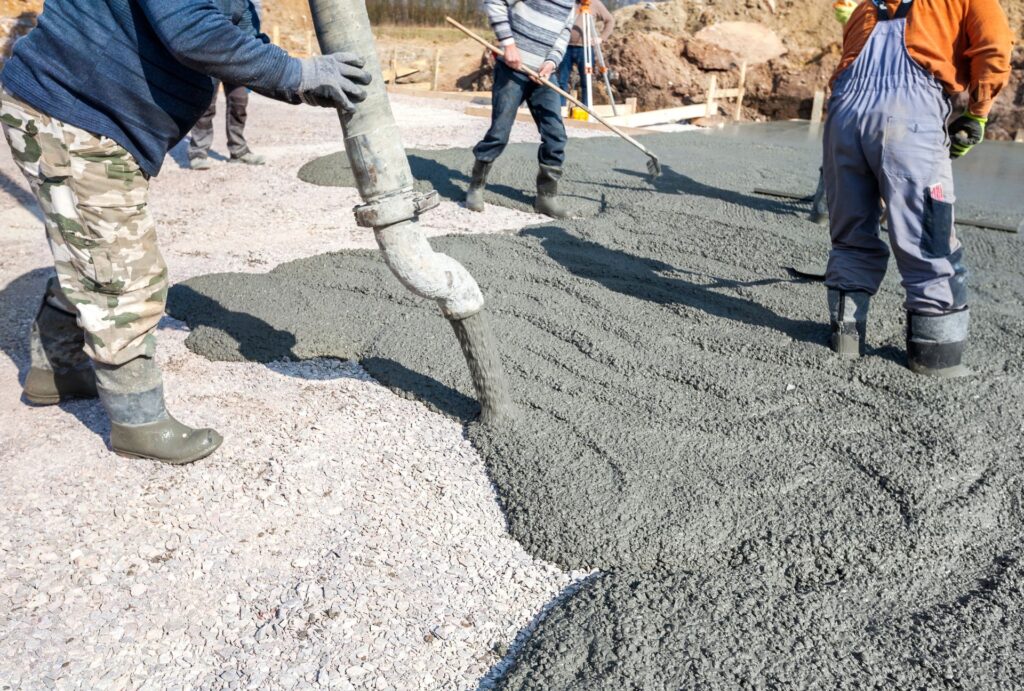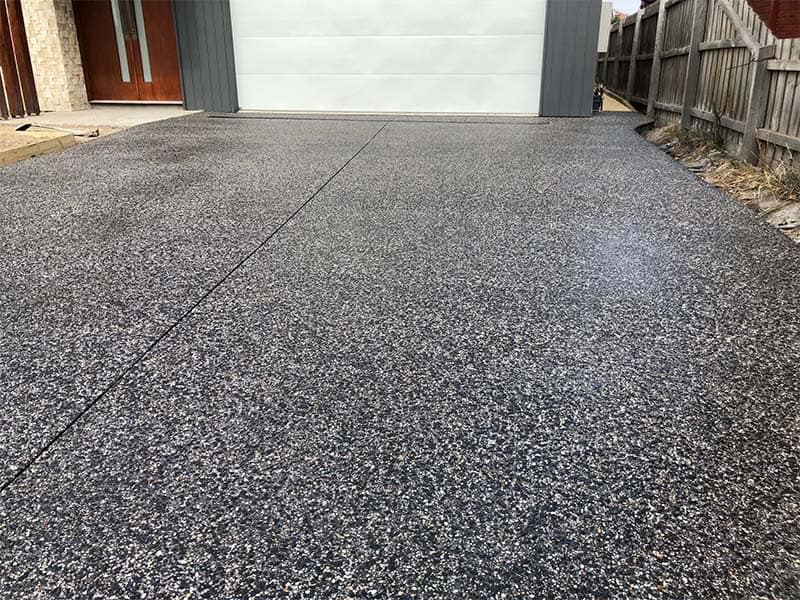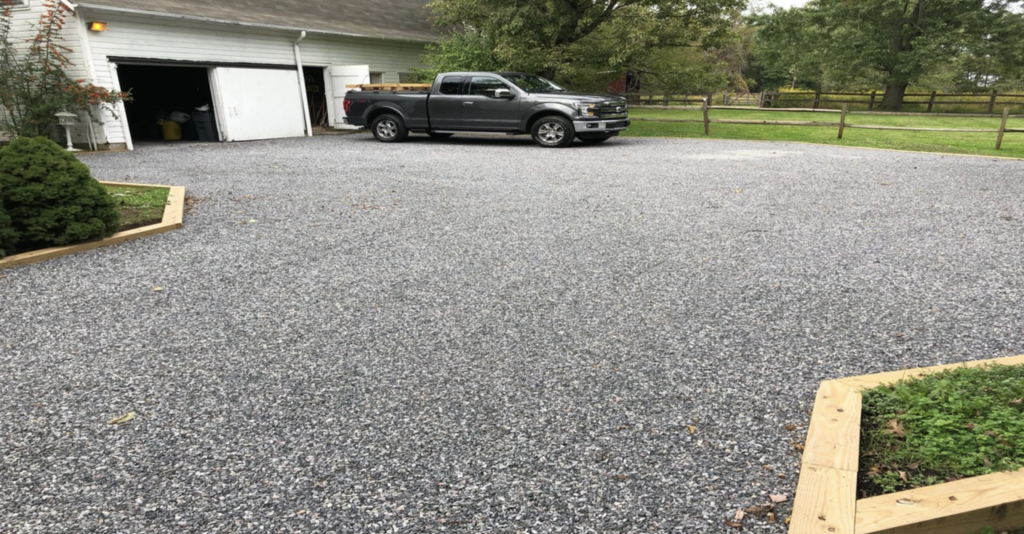Welcome to the Concrete Industry Update for Auckland – Quarter 1, 2025, your go-to source for the latest developments shaping one of the city’s most vital sectors. As Auckland continues to grow, with booming infrastructure projects, evolving sustainability goals, and advancements in technology, the concrete industry plays a pivotal role in laying the foundation—literally and figuratively—for progress. In this update, we’ll explore key trends, major projects, and challenges faced by the industry during the first quarter of 2025, offering insights into what these changes mean for businesses, workers, and the community.
The Concrete Industry Update for Auckland – Quarter 1, 2025 highlights key trends, including advancements in sustainable construction, major infrastructure projects, and shifts in material costs. With growing demand across residential, commercial, and public sectors, the industry is adapting to new technologies and environmental regulations. Stay informed about the latest developments shaping Auckland’s construction landscape.
- Overview Of The Concrete Industry In Auckland
- Key Developments In Q1 2025: Construction Industry Trends And Progress
- Sustainability In Focus: Green Concrete And Regulatory Developments In Auckland
- Market Trends And Insights In Auckland’s Concrete Industry
- Challenges And Opportunities In The Construction Industry
- Expert Opinions And Predictions For 2025: The Future Of Concrete In Auckland
- Tips For Businesses And Stakeholders: Adapting To Change And Future-Proofing Strategies
- FAQs: About Concrete Industry Update Auckland Quarter 1 2025
- What is the focus of the Concrete Industry Update for Auckland in Q1 2025?
- Why is the concrete industry important to Auckland?
- What are the major projects highlighted in Q1 2025?
- How is sustainability impacting the concrete industry in Auckland?
- Are there any significant technological advancements in the industry?
- What challenges does the industry face in Q1 2025?
- How are market trends shaping the concrete industry?
- What role do government regulations play in the industry?
- Who are the key players in Auckland’s concrete industry?
- How can businesses adapt to changes in the industry?
- Conclusion
Overview Of The Concrete Industry In Auckland
The concrete industry in Auckland plays a pivotal role in the region’s ongoing growth, underpinning major construction projects, infrastructure developments, and a rising demand for sustainable building practices. As of the end of 2024, the sector remains robust, driven by Auckland’s expanding population and its burgeoning real estate and infrastructure sectors.
Current State of the Concrete Industry in Auckland
Auckland’s concrete industry is currently experiencing steady demand across both residential and commercial construction. Major infrastructure projects, including roads, bridges, and public transport networks, continue to fuel the sector’s growth. The demand for concrete in residential developments, particularly in multi-story buildings, has been increasing, driven by a population surge and the urbanization of suburban areas.
The industry’s focus has also shifted towards sustainability. In 2024, Auckland’s concrete sector began embracing more eco-friendly practices, including the adoption of green concrete alternatives. This shift aligns with global trends toward sustainable construction, where reducing carbon emissions is critical. Innovations such as recycled concrete and the use of alternative binders have seen significant adoption, making the industry not only an economic powerhouse but also a more environmentally responsible part of Auckland’s construction ecosystem.
Economic Impact of the Concrete Industry in Auckland
The concrete industry is a key driver of Auckland’s economy. It directly supports thousands of jobs, with workers involved in the production, transport, and application of concrete across various sectors. This contribution is essential as Auckland’s population continues to rise, requiring more housing and infrastructure. The sector also supports related industries, such as transport, manufacturing, and steel, creating a ripple effect that contributes to the city’s overall economic health.
In 2024, it was reported that the concrete sector contributed significantly to Auckland’s GDP, with a substantial portion of public and private sector investments directed toward construction projects. The industry has become integral to Auckland’s economic blueprint, from the growth of its commercial real estate sector to the infrastructure investments that support its expanding population. Notably, the public sector’s commitment to improving Auckland’s transport network, including road repairs and the development of public transit systems, has directly boosted the demand for concrete materials.
Additionally, Auckland’s major construction projects, such as the City Rail Link and the Waterfront Development, continue to represent significant investments that will require years of concrete work, creating thousands of temporary and permanent jobs in the process.
Key Players in Auckland’s Concrete Industry
Several major players shape the concrete landscape in Auckland. These include concrete manufacturers, suppliers, and construction firms, many of which are household names in the New Zealand building industry.
- Fletcher Building: As one of New Zealand’s largest construction firms, Fletcher Building is a leader in the Auckland concrete market. The company is involved in everything from supplying raw materials to overseeing major construction projects, including residential, commercial, and infrastructural developments.
- Holcim: A global leader in the cement and concrete industry, Holcim operates extensively in Auckland, providing materials for key infrastructure and construction projects. The company is also at the forefront of sustainable concrete solutions, aligning with Auckland’s increasing demand for green building practices.
- Concrete NZ: The national trade association for the concrete industry, Concrete NZ plays a crucial role in shaping the future of the concrete sector in Auckland. Through advocacy, training, and promoting best practices, it helps ensure that the industry meets evolving environmental standards and market demands.
- Local Contractors and Concrete Specialists: Numerous specialized concrete contractors are integral to the industry’s success. These smaller firms, often family-owned or locally operated, contribute to the sector’s innovation and craftsmanship. They bring expertise in both residential and commercial projects, making them vital contributors to Auckland’s construction boom.
These players are not only involved in shaping Auckland’s built environment but also in pushing forward innovative practices that balance economic growth with sustainability goals. As the industry faces growing challenges in terms of carbon reduction and material efficiency, these key players are leading the charge in creating a more sustainable future for the concrete industry in Auckland.
By focusing on these core aspects—current market trends, economic impact, and key players—this comprehensive overview paints a clear picture of the concrete industry’s integral role in Auckland’s growth and development, both now and into the future. Through continued investment in sustainable practices and collaboration across sectors, the industry will remain a critical pillar in Auckland’s evolving landscape.
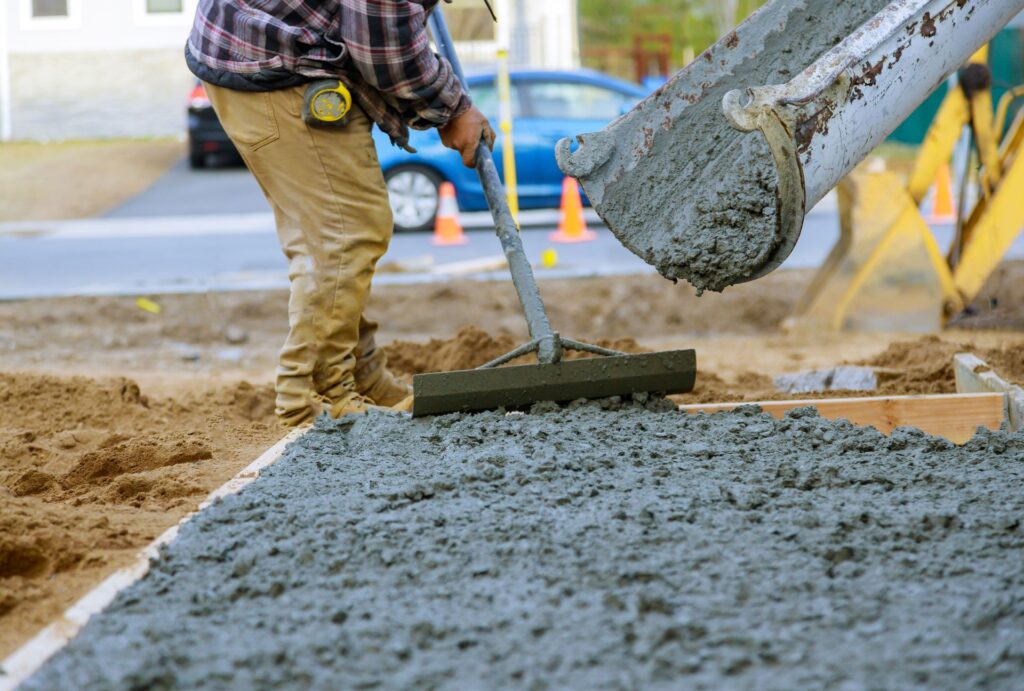
Key Developments In Q1 2025: Construction Industry Trends And Progress
As we kick off 2025, the construction sector in Auckland is witnessing significant transformations. With major projects underway and technological advancements shaping the future, it’s essential to stay informed about these changes. Here’s a detailed overview of the key developments taking place in Q1 2025:
Major Projects in Progress
- Public Infrastructure Developments: In early 2025, several large-scale infrastructure projects are gaining momentum in Auckland. These projects are set to enhance the city’s public transport networks, improve road systems, and upgrade essential utilities. Notably, the city is focusing on expanding its mass transit infrastructure to reduce congestion and promote sustainability. Key projects include the construction of new bus stations, the expansion of cycle lanes, and the enhancement of public transportation terminals to accommodate increasing demand.
The Auckland City Council has also made substantial progress on eco-friendly initiatives. Many of these projects are designed to meet long-term sustainability goals, such as reducing carbon emissions and improving accessibility for all residents. This includes building energy-efficient public buildings, parks, and green spaces.
- Residential Developments: The residential sector remains a major focus for Auckland developers. In Q1 2025, a surge in new housing projects is expected to tackle the city’s growing demand for affordable homes. The government’s push to address the housing shortage through the KiwiBuild initiative continues to spur new developments, ranging from high-density apartments to affordable homes in suburban areas.
With an increasing focus on mixed-use developments, residential areas are being planned alongside commercial hubs to create vibrant communities. These developments are designed to meet the needs of Auckland’s expanding population while preserving the city’s natural beauty and reducing the urban sprawl.
- Government-Funded Initiatives: The government is playing a pivotal role in Auckland’s construction landscape by funding various urban regeneration projects. These initiatives aim to revitalize older neighborhoods, improve infrastructure, and attract businesses to areas in need of economic stimulation. Additionally, public-private partnerships are being used to maximize efficiency and ensure that the projects remain within budget.
Technological Advancements in Construction
- Innovative Machinery and Techniques: The construction industry in Auckland is embracing new technologies to increase productivity and reduce costs. Advances in machinery, including automated equipment and drones, are streamlining the construction process. Drones, for example, are being used for site surveys, monitoring progress, and ensuring safety standards. This not only speeds up work but also enhances accuracy in measurement and logistics.
Another notable trend is the adoption of 3D printing in the construction process. This technology is allowing for faster and more precise building components, reducing material waste and accelerating the timeline of construction projects. As 3D printing becomes more mainstream, expect it to revolutionize the way structures are built.
- Sustainable Construction Practices: Sustainability is at the forefront of new construction practices in Auckland. The use of eco-friendly materials, energy-efficient designs, and smart buildings is becoming increasingly common. The integration of solar panels, rainwater harvesting systems, and sustainable construction materials ensures that new buildings are designed with the environment in mind.
Construction firms are also making efforts to reduce their carbon footprint by using low-emission machinery and optimizing energy usage on job sites. These innovations are not just good for the environment but are also appealing to investors and buyers who are prioritizing sustainability.
- Smart Technologies: Another significant technological advancement is the integration of smart technology into construction projects. This includes the installation of smart sensors and Internet of Things (IoT) devices in buildings, enabling automated systems for lighting, security, and temperature control. These innovations are driving the demand for smarter, more connected urban environments, where technology enhances the quality of life for residents.
Supply Chain Dynamics
- Challenges in Sourcing Raw Materials: As construction projects ramp up in Q1 2025, the industry faces challenges in sourcing essential raw materials, particularly steel, timber, and concrete. The global supply chain disruptions that started in 2020 continue to impact the availability and cost of these materials. Rising transportation costs and limited availability from overseas markets have forced many local suppliers to adjust their pricing models.
Additionally, delays in shipping and logistics continue to affect project timelines, as many construction companies struggle to secure consistent material supplies. However, efforts to localize supply chains and source materials domestically are gaining traction in Auckland. Local manufacturers are being encouraged to ramp up production, which could mitigate some of these challenges in the coming months.
- Notable Partnerships and Supply Chain Changes: To overcome these challenges, many construction firms in Auckland are forming strategic partnerships with local and international suppliers. These collaborations are essential for ensuring that projects remain on track despite material shortages. By diversifying their supply sources, companies are also reducing their dependency on specific suppliers, which helps mitigate risks associated with supply chain disruptions.
Additionally, digital tools are becoming increasingly important in managing supply chain logistics. Construction firms are adopting software solutions that track material deliveries, inventory levels, and project milestones in real time. This technology provides greater visibility into the supply chain, allowing project managers to adjust quickly to delays or shortages.
Q1 2025 is proving to be a dynamic period for Auckland’s construction sector. With a focus on major infrastructure and residential projects, the integration of cutting-edge technologies, and efforts to address ongoing supply chain challenges, the city’s construction landscape is evolving rapidly. By keeping an eye on these key developments, stakeholders in the construction industry can better navigate the opportunities and challenges ahead.
For anyone involved in the sector, staying up-to-date on these trends and adapting to new technologies will be crucial to staying competitive and driving successful projects forward.
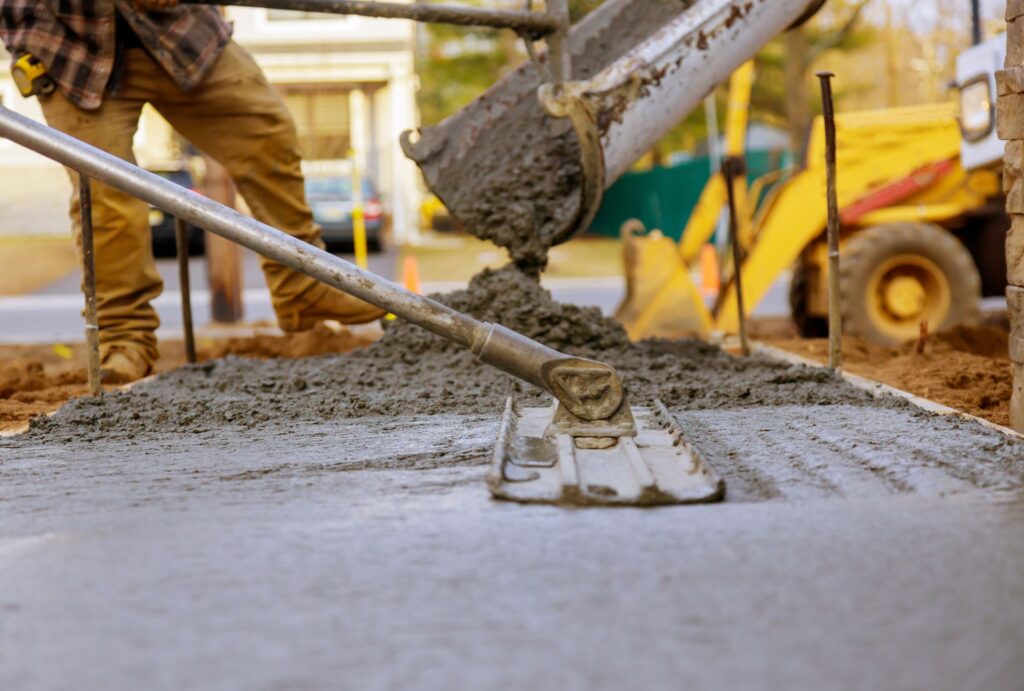
Sustainability In Focus: Green Concrete And Regulatory Developments In Auckland
The construction industry in Auckland is increasingly embracing sustainable practices, and one of the key innovations leading this transformation is the adoption of green concrete. As sustainability becomes a growing priority globally, cities like Auckland are taking significant steps to reduce the environmental impact of construction activities, and green concrete is playing a pivotal role.
Green Concrete Initiatives
Green concrete refers to concrete produced with a lower environmental impact compared to traditional concrete. It involves using sustainable materials such as recycled aggregates, geopolymers, and supplementary cementitious materials (SCMs) like fly ash or slag. These alternatives not only reduce the amount of virgin resources used but also cut down on carbon emissions associated with concrete production.
In Auckland, several key projects in Q1 of 2025 have highlighted the growing momentum towards eco-friendly construction. For instance, the Auckland Central Transport Hub has incorporated green concrete in its foundations and structural components. This project serves as a prime example of how large-scale infrastructure can integrate sustainability while maintaining strength and durability.
Additionally, the Wynyard Quarter urban regeneration project has also made strides in using eco-conscious materials, including green concrete. The commitment to sustainability is evident in the choice of materials, which help mitigate the carbon footprint and promote energy efficiency during the building’s lifecycle.
Regulatory Developments
Government regulations surrounding sustainability and emissions have become stricter in recent years, and 2025 marks an important year for construction policies in Auckland. The New Zealand Government has recently introduced carbon emissions caps for large-scale construction projects, which directly influence how concrete is produced and used. These caps are part of a broader initiative to achieve net-zero emissions by 2050, with specific targets for construction and building sectors.
Additionally, Building Code Amendments are being introduced to enforce the use of sustainable building materials. These regulations focus on reducing the carbon intensity of new constructions and renovations. This means that green concrete is not just an innovative choice; it’s becoming an essential component of compliance with national sustainability goals.
A key piece of legislation that has been gaining attention in Auckland is the Emissions Trading Scheme (ETS), which penalizes businesses that exceed emission limits. As part of this, concrete manufacturers are increasingly being urged to find low-emission production methods, including the adoption of alternative materials such as green concrete.
Public and Industry Response
The shift toward sustainable construction practices has elicited diverse responses both within the construction industry and from the general public in Auckland. Among industry professionals, the adoption of green concrete has been generally well-received, especially given the long-term benefits it offers in reducing environmental impact and meeting regulatory demands. However, some builders have expressed concerns about the costs associated with switching to eco-friendly alternatives. These concerns revolve around the higher initial investment required for green concrete, although many experts argue that this upfront cost is offset by long-term savings through regulatory compliance and enhanced building performance.
Public perception in Auckland has been largely positive, particularly among residents who are increasingly aware of the environmental implications of large-scale construction. Many Auckland residents support green initiatives and view eco-friendly buildings as a sign of a forward-thinking, environmentally responsible city. As sustainability continues to be a key concern for both individuals and communities, residents expect to see more projects like the Auckland Central Transport Hub and Wynyard Quarter that prioritize both modern infrastructure and environmental stewardship.
Looking Ahead
The focus on sustainability in Auckland’s construction sector is expected to grow as both regulatory pressures and consumer demand for eco-friendly buildings intensify. Green concrete is just one example of how the construction industry is transforming to meet these new challenges, but it is likely that more innovations will emerge in the coming years.
As Auckland continues to lead the way in sustainable construction practices, its efforts could serve as a model for other cities looking to reduce their carbon footprint while maintaining economic growth. The combination of green concrete initiatives, regulatory developments, and public support will play a crucial role in shaping a sustainable future for the city.
In conclusion, the ongoing adoption of sustainable building practices, exemplified by green concrete and supportive government policies, marks a significant step forward in Auckland’s environmental responsibility. By integrating these innovations into construction, Auckland is not only reducing its carbon footprint but also setting a precedent for cities around the world to follow.
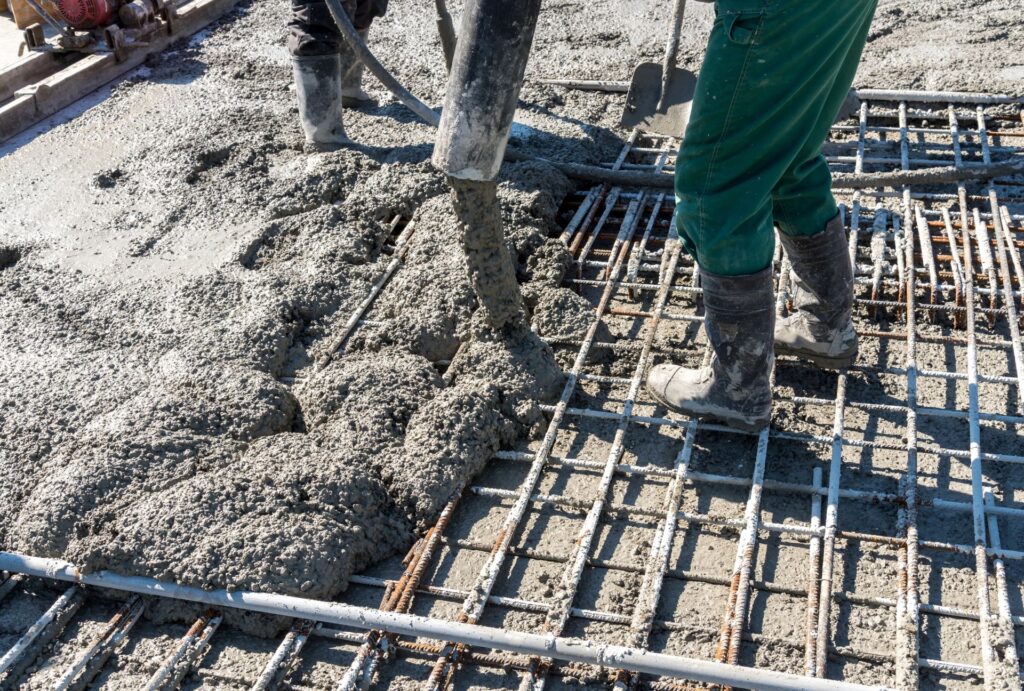
Market Trends And Insights In Auckland’s Concrete Industry
The concrete industry in Auckland is evolving rapidly due to several factors that affect demand, pricing, and the workforce. This section delves into key market trends that shape the local concrete landscape, providing a thorough analysis of demand fluctuations, pricing trends, and labor market dynamics.
Demand Fluctuations in the Concrete Industry
Demand for concrete is subject to varying factors across different sectors, including residential, commercial, and infrastructure projects. Understanding these demand fluctuations is essential for businesses to navigate the challenges of the market effectively.
- Residential Sector: In Auckland, the residential sector plays a significant role in driving concrete demand. With the city’s expanding population and the push for urban development, there has been a consistent demand for concrete in new homes, apartment complexes, and renovations. Demand in this sector is often influenced by government housing policies, interest rates, and consumer confidence. A boom in housing construction or urban renewal projects can lead to a spike in concrete requirements.
- Commercial Sector: The commercial construction sector in Auckland, including retail developments, office buildings, and industrial facilities, also sees a steady demand for concrete. Demand can be directly influenced by economic conditions, such as investment trends, business expansion, and infrastructure projects. For instance, significant commercial developments often coincide with economic growth, driving the need for high-quality concrete.
- Infrastructure Sector: Infrastructure projects, such as road networks, bridges, and public transportation facilities, represent another crucial area for concrete demand. With Auckland’s growing infrastructure needs, influenced by population growth and urbanization, concrete remains essential for creating long-lasting, durable structures. Public works and government investments in infrastructure also help stabilize the demand for concrete throughout the year.
- Seasonal and Economic Influences: The demand for concrete can be subject to seasonal variations. During winter months, construction projects may slow down due to weather conditions affecting the curing process of concrete. On the other hand, warmer months see increased construction activity. Economic factors, such as interest rates, construction budgets, and material costs, also influence the concrete market. Economic downturns can lead to a reduction in construction projects, decreasing the demand for concrete.
Pricing Trends in the Concrete Market
The cost of concrete and related materials in Auckland is constantly evolving, influenced by both local and global factors. Understanding these pricing trends is crucial for businesses and consumers to make informed decisions about purchasing concrete and managing project costs.
- Global Supply Chain Issues: Global supply chain disruptions, such as the ones caused by the COVID-19 pandemic, continue to have a significant impact on concrete pricing. Auckland, being a key hub for importing raw materials like cement and aggregates, is vulnerable to price increases resulting from global transportation delays, shipping costs, and shortages in essential materials. These disruptions can cause material costs to fluctuate, directly influencing the overall pricing of concrete.
- Material Cost Variations: The pricing of concrete is closely tied to the cost of its raw materials, such as cement, sand, and aggregates. Fluctuations in global demand and supply can lead to price hikes, which eventually trickle down to the local market. For example, rising energy costs can increase the manufacturing cost of cement, which in turn affects the price of finished concrete products in Auckland. Furthermore, environmental regulations and sustainability efforts, such as the push for lower carbon emissions in production processes, can also influence concrete prices.
- Domestic Market Influences: Local factors in Auckland, such as labor costs, land availability for raw material extraction, and transportation costs, contribute to the price of concrete. As Auckland’s infrastructure projects and residential construction boom, increased demand for local aggregates and cement can cause prices to rise. Additionally, competition among suppliers within the region can either stabilize or escalate concrete costs, depending on market conditions.
- Pricing Forecast: Looking forward, the concrete market in Auckland is likely to see pricing increases due to continued pressure from global supply chain issues, rising labor costs, and the ongoing demand for construction materials. It is crucial for businesses and consumers to plan their projects with these pricing trends in mind, considering alternative materials or adjusting project timelines to mitigate cost fluctuations.
Labor Market Insights in Auckland’s Concrete Industry
The availability of skilled labor is a crucial factor in the growth and sustainability of Auckland’s concrete industry. While demand for concrete remains strong, the workforce available to meet these demands faces challenges in terms of skills development, availability, and training.
- Workforce Availability: The concrete industry in Auckland is facing challenges related to labor shortages. With construction projects ramping up, the demand for skilled concrete workers, such as masons, finishers, and operators, has outstripped the supply of qualified personnel. This shortage can delay projects, increase labor costs, and affect the quality of work. To address this, businesses are increasingly looking to attract workers through competitive wages, benefits, and training opportunities.
- Training and Skills Gaps: The growing demand for highly skilled concrete workers is leading to an increased need for training and certification programs. New workers entering the industry must be equipped with the skills to meet modern construction requirements, such as advanced concrete mixing, environmentally sustainable practices, and safety protocols. However, there is a noticeable gap in the availability of such training programs in Auckland, which exacerbates the labor shortage and forces employers to rely on international labor markets to fill positions.
- Upskilling Existing Workforce: For businesses looking to remain competitive, investing in the upskilling of their current workforce is essential. By offering training opportunities in the latest concrete technologies and techniques, companies can ensure they have the expertise needed to meet increasing demand. Furthermore, a focus on employee retention and career development will help alleviate turnover and encourage a skilled workforce to remain within the industry.
- Collaborations with Educational Institutions: Partnerships between the concrete industry and local educational institutions, such as trade schools and universities, can play a pivotal role in addressing labor shortages. By establishing apprenticeship programs and internships, these collaborations provide young people with hands-on experience, while also preparing them for the workforce. Over time, such efforts can help ensure a steady flow of skilled workers into Auckland’s concrete industry.
The concrete industry in Auckland is experiencing significant growth, driven by demand in the residential, commercial, and infrastructure sectors. While demand is generally high, it is subject to fluctuations based on seasonal and economic factors. Pricing trends reflect both local and global influences, with supply chain disruptions and material costs affecting the overall price of concrete. Furthermore, the labor market faces challenges due to workforce shortages and skills gaps, which call for increased investment in training and development. For businesses in Auckland’s concrete industry, staying informed on these trends will be crucial for maintaining competitiveness and ensuring long-term success in an evolving market.
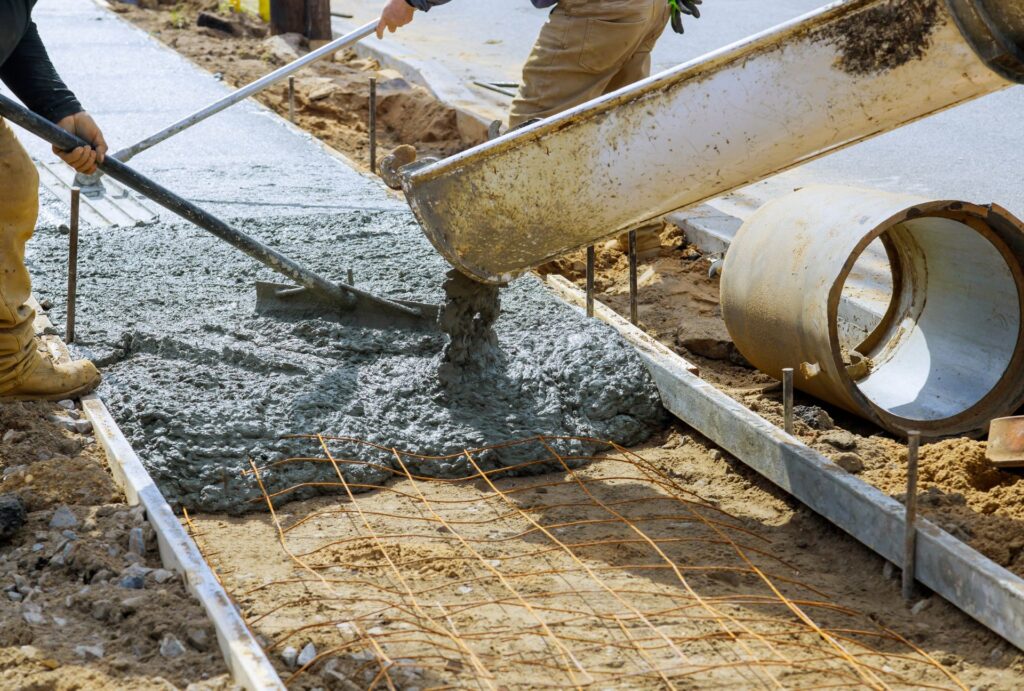
Challenges And Opportunities In The Construction Industry
The construction industry is facing a complex landscape of challenges, but also a wealth of opportunities that can help drive future growth. Understanding both the hurdles and the promising avenues for expansion can help businesses adapt and thrive in a competitive market.
Challenges in the Construction Industry
- Rising Costs of Materials and Labor One of the most significant hurdles in the construction sector today is the increase in material and labor costs. Over the past few years, there has been a noticeable spike in the prices of essential building materials like steel, lumber, and concrete. These price fluctuations often result from supply chain disruptions, geopolitical tensions, and global inflation. Additionally, skilled labor shortages continue to plague the industry. This shortage is exacerbated by the aging workforce, with fewer young people entering the field, leading to increased competition for skilled tradespeople. Consequently, construction companies are faced with higher wages to attract talent and escalating costs for materials, which can strain project budgets and timelines.
- Regulatory Pressures and Environmental Challenges The construction industry is also grappling with increased regulatory pressures and environmental challenges. Governments worldwide are implementing stricter building codes and safety regulations to ensure projects meet sustainability and safety standards. These regulations, while necessary for public welfare, can add complexity and delays to construction projects. For example, new environmental standards may require the use of sustainable materials or the reduction of a project’s carbon footprint, both of which can raise costs. Additionally, climate change has introduced unpredictable weather patterns and natural disasters that can impact construction schedules and force companies to rethink their project management strategies.
Opportunities in the Construction Industry
- Growth in Residential Developments Due to Housing Demand Despite the challenges, there are notable opportunities emerging from the growth in residential developments. With a global housing shortage, particularly in urban areas, there is increasing demand for affordable housing. Governments and private developers are focusing on meeting this need by building more residential units. This surge in housing demand presents a unique opportunity for construction firms to secure contracts for residential projects. Additionally, rising urbanization is pushing for more mixed-use developments, which combine residential, commercial, and recreational spaces. Construction companies that can effectively manage these projects are well-positioned to benefit from this demand.
- Emerging Technologies in Construction Another exciting opportunity is the integration of emerging technologies, which are revolutionizing the way construction projects are designed, managed, and executed. Technologies like Artificial Intelligence (AI), machine learning, and robotics are beginning to play a pivotal role in construction. AI can optimize construction scheduling, predict maintenance needs, and assist in project design, improving efficiency and reducing costs. Robotics is being used for tasks such as bricklaying and site surveying, minimizing labor shortages and speeding up construction processes. Additionally, advancements in the recycling of building materials are contributing to more sustainable practices in the industry. The use of recycled materials, such as repurposed steel or recycled concrete, reduces waste and helps lower costs, making it a win-win for construction companies and the environment.
Moreover, innovations in 3D printing and modular construction are also creating exciting possibilities. These technologies enable faster, cost-effective, and more precise building methods, while also reducing material waste. Companies that invest in these technologies can improve their competitive edge and reduce project lead times, making them more attractive to clients.
Navigating Challenges and Seizing Opportunities
In conclusion, while the construction industry faces significant challenges such as rising costs and regulatory pressures, these hurdles also present opportunities for companies to innovate and expand. By embracing emerging technologies, exploring sustainable building practices, and adapting to the growing demand for housing, construction businesses can position themselves for long-term success. Focusing on both addressing current challenges and seizing future opportunities is essential for staying competitive in the ever-evolving construction landscape.
By staying informed about industry trends and evolving strategies, construction firms can not only survive but thrive, turning challenges into opportunities for growth.
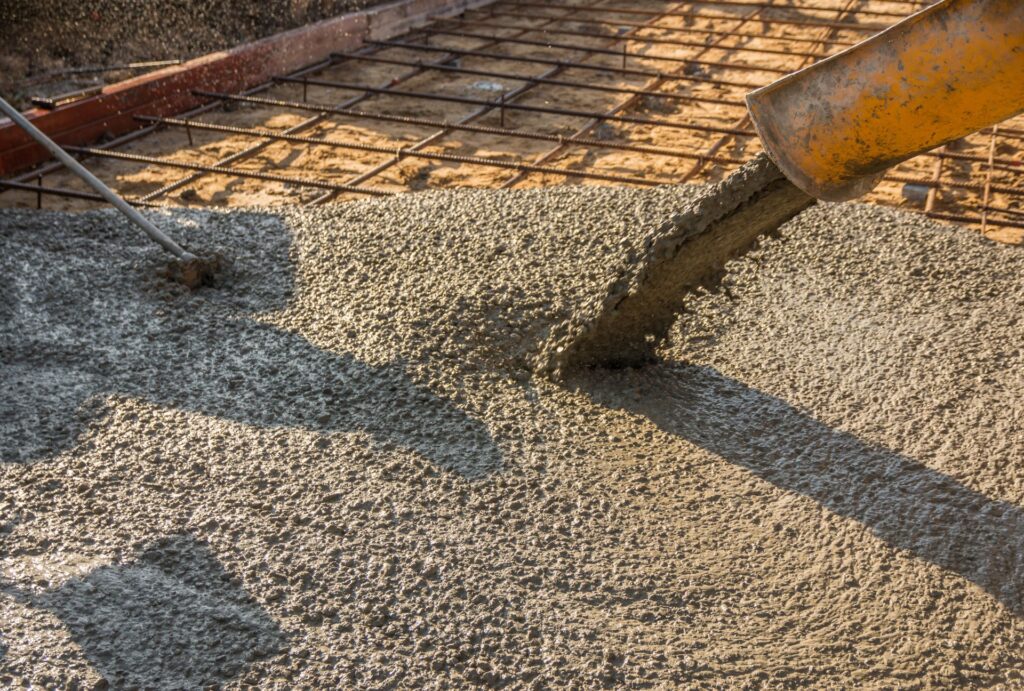
Expert Opinions And Predictions For 2025: The Future Of Concrete In Auckland
The construction industry in Auckland is poised for significant changes in 2025, especially in the realm of concrete. As the city continues to grow, with an expanding population and infrastructure projects, the demand for high-quality concrete solutions is set to rise. To better understand the future of this vital industry, we’ve gathered insights from industry leaders and experts who have shared their predictions on the key trends and developments expected to shape Auckland’s concrete landscape in 2025.
Quotes from Industry Leaders: Perspectives on the Future of Concrete in Auckland
1. John Harrison, Managing Director at Auckland Concrete Solutions:
“Concrete is and will continue to be the backbone of Auckland’s infrastructure. As we look ahead to 2025, we can expect an increasing emphasis on sustainable materials and practices. The push for eco-friendly construction will drive innovations, and we are already seeing the integration of recycled aggregates and low-carbon technologies in concrete production.“
2. Sarah Mitchell, Chief Engineer at Urban Developments Ltd.:
“The demand for concrete in Auckland is growing, particularly with the rapid urbanization happening in the city. However, with this increase in demand comes the challenge of reducing the environmental footprint of our concrete production. By 2025, we expect a greater adoption of green building standards and more sustainable construction methods, which will fundamentally shift how we approach concrete.“
3. Michael Davies, Head of Concrete Innovations at NZ Concrete Council:
“Auckland’s skyline is evolving, and so is its concrete. We’re seeing a rise in the use of high-performance, lightweight concrete, which can significantly reduce material costs and transportation impacts. By 2025, innovations in concrete mix designs will allow for quicker curing times and more versatile uses, from high-rise buildings to public works projects.“
Predictions for the Rest of 2025: What Trends May Dominate the Concrete Industry in Auckland?
The concrete industry in Auckland is at a crossroads, with several emerging trends likely to dominate throughout 2025 and beyond. These trends not only reflect the city’s growing construction needs but also the increasing demand for sustainability and innovation in building materials.
1. Sustainable Concrete Solutions Will Take Center Stage
Environmental concerns are becoming a major focus in the construction industry, and concrete is no exception. Experts predict that in 2025, there will be a significant shift toward using eco-friendly alternatives in concrete production. Recycled materials, such as crushed glass and industrial by-products, will be incorporated more widely to reduce carbon emissions. Additionally, the use of low-carbon cements and the introduction of carbon capture technologies will become more prevalent. This focus on sustainability aligns with Auckland’s broader commitment to achieving carbon-neutral goals, with concrete playing a key role in reducing the industry’s carbon footprint.
2. Increased Use of Smart Concrete for Better Performance and Durability
Another key prediction for 2025 is the continued evolution of smart concrete technologies. Smart concrete, which includes sensors embedded within the mix to monitor stress, temperature, and structural integrity, is becoming an integral part of construction projects. In Auckland, this technology will not only enhance the performance of concrete but also improve the safety and lifespan of structures. By monitoring the condition of concrete in real-time, engineers will be able to predict maintenance needs and prevent costly repairs.
3. Growth in Concrete Demand Driven by Urban Development and Infrastructure Projects
As Auckland experiences rapid urbanization and a boom in infrastructure projects, the demand for concrete is expected to grow substantially in 2025. Major city developments, including new residential neighborhoods, office complexes, and public transportation systems, will all require large quantities of concrete. This growth will place further pressure on the concrete supply chain, prompting companies to adopt more efficient production methods and delivery systems.
4. The Rise of Prefabricated Concrete Components
Prefabricated concrete components, such as panels and beams, are gaining popularity in the construction industry. These components are manufactured off-site and then transported to the construction site for quick assembly. This method not only reduces construction time but also minimizes waste and enhances precision. In 2025, it’s expected that more projects in Auckland will rely on prefabricated concrete elements, especially for large-scale commercial and residential developments.
5. Advances in Concrete Recycling and Circular Economy Practices
Concrete recycling is set to be one of the most significant trends in Auckland’s concrete industry by 2025. As the city focuses on becoming more sustainable, construction companies are increasingly looking for ways to reuse and recycle concrete waste from demolition sites. The development of advanced recycling technologies will allow for the production of high-quality recycled concrete aggregates, making the material a more viable option for new construction projects. This shift towards a circular economy will not only reduce the environmental impact of concrete but also help address the growing issue of construction waste.
What Does This Mean for Concrete in Auckland?
As Auckland moves into 2025, the concrete industry is poised for a transformative year. The demand for concrete will undoubtedly grow as urbanization continues and infrastructure projects expand. However, this growth will be accompanied by a greater emphasis on sustainability, innovation, and efficiency. From eco-friendly concrete solutions and smart technologies to the rise of prefabricated components and recycling practices, the future of concrete in Auckland is bright and evolving.
Experts agree that the key to success in 2025 will be adaptability and foresight. Construction companies that can innovate and embrace new technologies will be best positioned to meet the challenges ahead. For those in the concrete industry, the future promises exciting opportunities to shape Auckland’s infrastructure in more sustainable and efficient ways.
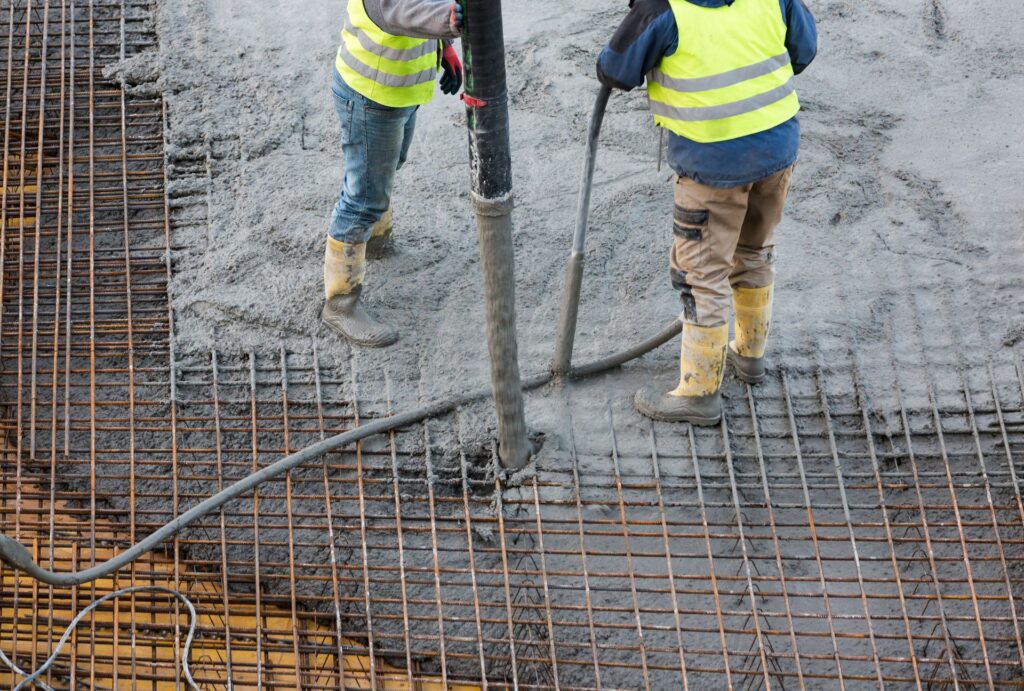
Tips For Businesses And Stakeholders: Adapting To Change And Future-Proofing Strategies
In today’s fast-paced and constantly evolving business environment, companies must adapt quickly to stay competitive. Both technological advancements and changing market dynamics are reshaping industries. For businesses to thrive, they need to embrace change, upskill their workforce, and plan for a sustainable future that meets both customer expectations and regulatory demands. Below are some actionable strategies to help companies navigate these challenges and future-proof their operations.
Adapting to Change: How Companies Can Stay Agile in a Shifting Landscape
- Embrace Technology for Competitive Advantage In the modern business world, technology isn’t just a tool—it’s a game-changer. Embracing digital transformation can help businesses streamline operations, enhance customer experiences, and improve productivity. Companies that adopt tools like artificial intelligence (AI), data analytics, and cloud computing gain a competitive edge by leveraging real-time data for decision-making. Whether it’s automating mundane tasks, analyzing customer behavior, or optimizing supply chains, technology can drive growth and efficiency.
- Invest in Automation: Automation can handle repetitive tasks and free up your team to focus on more strategic work. From chatbots handling customer inquiries to AI-driven data insights, automation enhances both efficiency and accuracy.
- Leverage Data Analytics: Harnessing big data helps businesses better understand customer preferences, identify trends, and make informed decisions that improve performance.
- Upskill Your Workforce for the Future As new technologies continue to disrupt industries, it’s essential for businesses to ensure their workforce remains skilled and adaptable. Upskilling and reskilling employees is not just an investment in their future—it’s an investment in the company’s ability to innovate and succeed in the long term.
- Provide Training Programs: Offering internal or external training programs can help employees stay relevant in the face of technological advancements. Focus on developing skills in areas such as data science, digital marketing, and project management.
- Encourage Lifelong Learning: Cultivating a culture of continuous learning motivates employees to stay current in their field, ensuring that the company’s talent pool is always ready to tackle new challenges.
- Stay Agile and Flexible In today’s world, businesses need to be able to pivot quickly. A rigid approach to business models or operations can limit opportunities for growth. By fostering a culture of flexibility, companies can respond swiftly to market fluctuations, consumer needs, and emerging technologies. Embrace agile methodologies in project management and decision-making to make adjustments quickly and efficiently.
- Foster a Growth Mindset: Encourage employees at all levels to view challenges as opportunities for growth and innovation. A flexible, open-minded approach can lead to the discovery of new business models and solutions.
- Adapt Business Models: As consumer preferences and market conditions evolve, businesses must be willing to update or entirely rethink their offerings. Whether it’s shifting to e-commerce or adopting new service delivery methods, keeping up with trends is essential for long-term success.
Future-Proofing Strategies: Building a Sustainable and Resilient Business for the Long Term
As the world faces environmental, economic, and social challenges, businesses must take proactive steps to future-proof themselves. Focusing on sustainability and aligning with regulatory requirements will not only ensure compliance but also enhance a brand’s reputation and longevity.
- Align with Sustainability Goals More than ever, consumers, investors, and stakeholders are looking to support businesses that prioritize sustainability. By integrating sustainable practices into operations, companies can contribute to a healthier planet while strengthening their brand.
- Reduce Environmental Footprint: Start by evaluating your company’s carbon footprint and finding ways to minimize energy consumption, reduce waste, and lower emissions. This can include switching to renewable energy sources, implementing recycling programs, or adopting sustainable sourcing for raw materials.
- Support Circular Economy Initiatives: The circular economy focuses on reducing waste by reusing materials and products. Businesses that embrace this model—such as by designing products for longevity or taking back old items for recycling—can contribute to sustainability while reducing costs.
- Adhere to Regulatory Requirements As governments worldwide introduce stricter environmental and business regulations, staying compliant is no longer optional. Ensuring that your business meets local, national, and international standards will not only protect you from legal repercussions but will also strengthen your brand’s credibility.
- Monitor Regulatory Changes: Regulatory requirements are constantly evolving. Keep an eye on local, regional, and global laws to ensure compliance, particularly regarding sustainability, labor laws, and data privacy.
- Invest in Compliance Solutions: Leverage technology to streamline compliance tracking. Automated systems can help ensure that your business consistently meets regulatory standards without the manual effort of sifting through changing rules and policies.
- Innovate for Long-Term Resilience To stay ahead of the curve, companies must focus on innovation and long-term strategy. Building resilience means being prepared for unforeseen events like economic downturns, supply chain disruptions, or global crises.
- Diversify Revenue Streams: Relying on a single product or service can leave businesses vulnerable during market shifts. Diversifying revenue streams by exploring new products, markets, or partnerships can ensure your business remains financially stable in challenging times.
- Implement Robust Risk Management: Developing a comprehensive risk management plan is essential for business resilience. Identify potential risks in areas like finance, supply chains, and cyber threats, and develop contingency plans to minimize their impact.
Adapting to change and future-proofing your business are not optional—they are necessary strategies for thriving in an unpredictable world. Embracing technology, upskilling your workforce, and aligning with sustainability goals will not only help your business navigate current challenges but also position it for success in the future. By taking proactive steps now, businesses can ensure they remain competitive, compliant, and resilient in the face of change. Whether through innovation, sustainability, or risk management, the future is filled with opportunities for businesses that are prepared to adapt and evolve.
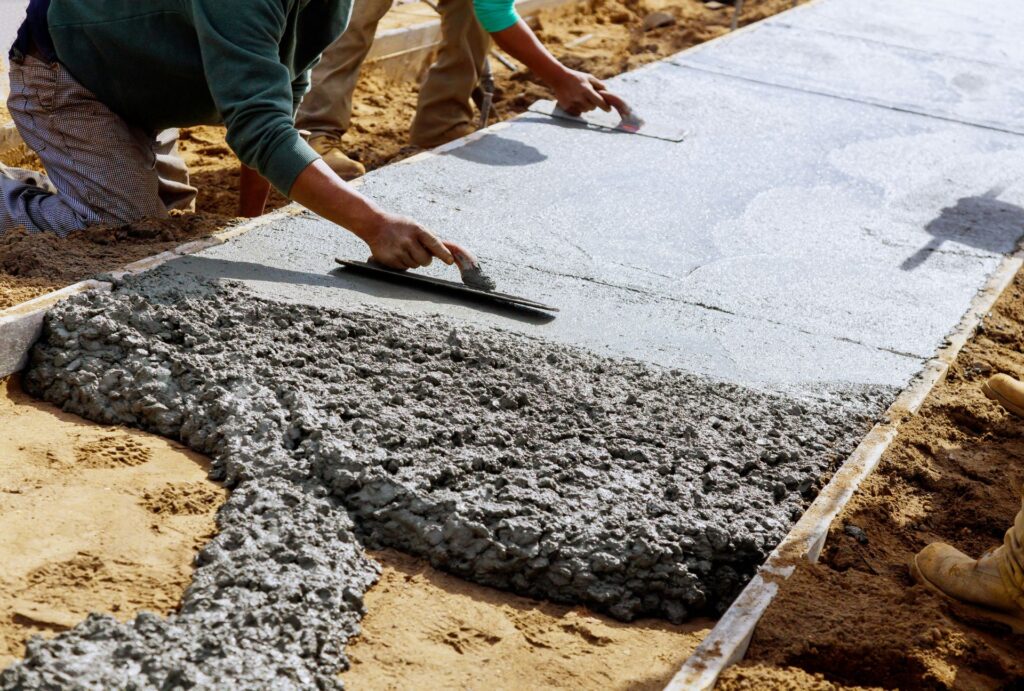
FAQs: About Concrete Industry Update Auckland Quarter 1 2025
What is the focus of the Concrete Industry Update for Auckland in Q1 2025?
The update focuses on key developments, trends, challenges, and opportunities in Auckland’s concrete industry during the first quarter of 2025, including insights into sustainability efforts, major projects, and market dynamics.
Why is the concrete industry important to Auckland?
The concrete industry is essential to Auckland’s growth, as it supports infrastructure development, residential and commercial construction, and the local economy by creating jobs and driving innovation in building practices.
What are the major projects highlighted in Q1 2025?
Major projects include large-scale public infrastructure initiatives, new residential developments, and commercial construction projects that are shaping the city’s landscape and addressing housing demands.
How is sustainability impacting the concrete industry in Auckland?
Sustainability is a growing focus, with companies adopting eco-friendly practices, using recycled materials, and meeting new government regulations aimed at reducing carbon emissions and environmental impact.
Are there any significant technological advancements in the industry?
Yes, advancements such as AI in construction, innovative concrete mixtures, and improved recycling methods are driving efficiency, reducing costs, and enhancing sustainability in Auckland’s concrete industry.
What challenges does the industry face in Q1 2025?
Key challenges include rising material and labor costs, supply chain disruptions, and the need to comply with stricter environmental regulations while maintaining profitability.
How are market trends shaping the concrete industry?
Market trends show growing demand across residential, commercial, and infrastructure sectors, influenced by housing needs, population growth, and government-funded projects, along with fluctuating material prices.
What role do government regulations play in the industry?
Government regulations are encouraging sustainable practices and reducing environmental impacts, pushing companies to innovate while meeting compliance standards. These regulations are reshaping the way businesses operate in Auckland.
Who are the key players in Auckland’s concrete industry?
Key players include major construction companies, suppliers, and developers who lead large projects, adopt sustainable practices, and influence market dynamics through partnerships and innovation.
How can businesses adapt to changes in the industry?
Businesses can adapt by embracing new technologies, investing in workforce training, prioritizing sustainability, and staying informed about market and regulatory developments to remain competitive in the evolving industry landscape.
Conclusion
In conclusion, the Q1 2025 update brings significant shifts in the digital landscape, emphasizing the importance of creating people-first content that focuses on user experience, expertise, and trustworthiness. It’s crucial for content creators to stay aligned with Google’s evolving guidelines, ensuring that their material is not only informative and original but also transparent and well-researched. As we move forward, staying informed about future updates will be essential for adapting strategies and maintaining visibility. We encourage you to share your thoughts on these changes and engage with the ongoing conversation about how they will shape the future of content creation. Your insights and questions are valuable, so let’s keep the discussion going to stay ahead of the curve.
If you need concrete laid in Auckland please contact us.
About the Author:
Mike Veail is a recognized digital marketing expert with over 6 years of experience in helping tradespeople and small businesses thrive online. A former quantity surveyor, Mike combines deep industry knowledge with hands-on expertise in SEO and Google Ads. His marketing strategies are tailored to the specific needs of the trades sector, helping businesses increase visibility and generate more leads through proven, ethical methods.
Mike has successfully partnered with numerous companies, establishing a track record of delivering measurable results. His work has been featured across various platforms that showcase his expertise in lead generation and online marketing for the trades sector.
Learn more about Mike's experience and services at https://theleadguy.online or follow him on social media:
